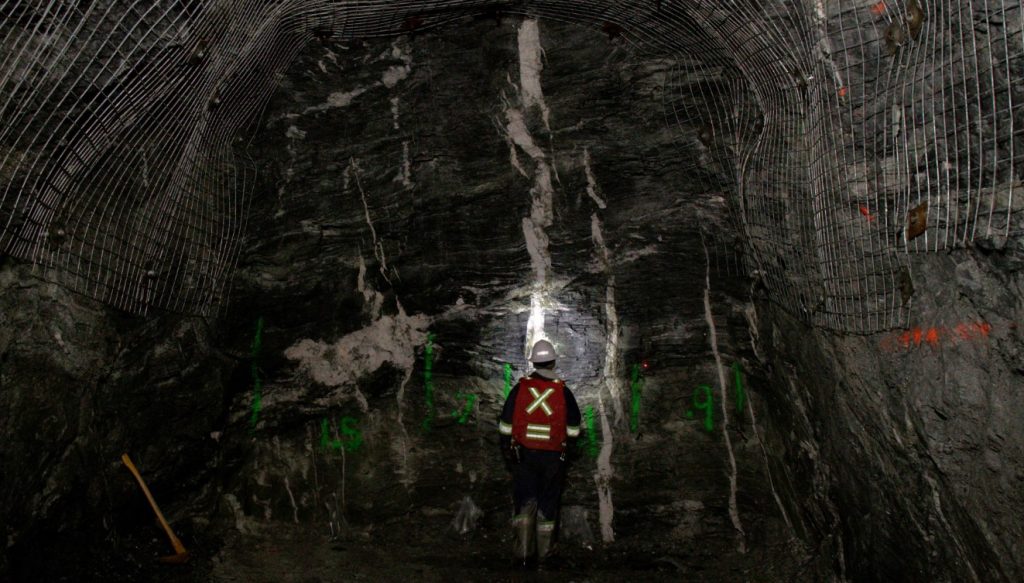Osisko Development drills 13.61 g/t gold Over 4.15 metres in initial infill drilling at QR Mine Prospect, Cariboo Gold Project, British Columbia

Osisko Development Corp. [NYSE, TSXV: ODV] reported drilling results from its 2024 initial exploration and historic data validation infill drill campaign at its Quesnel River Mine Prospect (QR Mine Prospect) within the company’s wider 100%-owned Cariboo Gold Project, central British Columbia, Canada.
Chris Lodder, President, stated, “Today’s infill results are promising and reinforce the prospectivity of the historic QR mine area, as well as several surrounding skarn and intrusion related gold targets. This limited drill program aimed to validate historical exploration data from work conducted by previous owners between the 1970s and 2000s, which lacked preserved drill core. A proposed follow-up targeted geophysical survey—combined with the existing data—will guide the next phase of exploration and target generation on the property.”
Highlights: This news release includes assays from 13 surface infill diamond drill (DD) holes totaling approximately 1,732 meters completed in 2024. Select assay highlights include: 13.61 g/t gold over 4.15 metres in hole QRM-24-006, including 31.90 g/t Au over 1.50 m; 5.98 g/t Au over 11.40 m in hole QRM-24-010; 4.27 g/t Au over 12.00 m in hole QRM-24-013; and 14.10 g/t Au over 3.55 m in hole QRM-24-009, including 8.55 g/t Au over 0.95 m.
2024 exploration program summary: The company is reviewing a historical drill database comprising over 130,000 metres of drilling in more than 1,300 drill holes. This extensive dataset is the product of exploration work competed by previous owners between the late 1970’s and 2000’s, and focused on several distinct localized zones of gold skarn mineralization, some of which were exploited through mining operations by previous owners. However, several drilling campaigns lack the necessary validation documentation by way of drill core data.
The 2024 drill campaign was designed as an initial program to target areas of mineralization outlined by historic drill data, aiming to validate and confirm its accuracy.
The intersected gold mineralization in the 13 new holes appears to be consistent with the mineralization observed historically at the QR Mine. Additionally, the mineralization is three dimensionally located adjacent to the mineralization noted in the historical data.
These results provide preliminary validation criteria for the potential use of the historic data for future exploration activities and target generation.
These encouraging results indicate the potential for local targeting using the historical drill data. Given the localized nature of historic drilling, there remains a possibility of yet undiscovered Au-rich zones within the area of the QR Mine Prospect.
However, a blanket of quaternary till covers most of the area, posing a challenge in the available exploration strategies. In this context, geophysical techniques are expected to be a good resource to narrow the search area, given what is already known about historical mineralization.
An existing aerial magnetic survey highlights the local magmatic intrusion (QR stock) as well as several other mag-high anomalies along a roughly NE-SW trend that could be a series of related intrusive bodies. The magnetic anomalies and their halos should be tested with induced polarization (IP) surveys. These could potentially define chargeability and resistivity anomalies that can be drill tested either within intrusive bodies if a porphyry deposit is present or in their halos similar to historical mineralization mined at the QR Mine. All available geochemical, geological, structural and remote sensing data will be used to help refine the geophysical targets.
Once this information is refined it will help inform a systematic drill targeting program to test with multiple drill holes. It is recommended that samples should be analyzed for their multi-element geochemistry to aid with vectoring even in the absence of significant gold.
The QR Mine Prospect property is located approximately 58 km southeast from Quesnel, accessible year-round, and approximately 111 km from the Cariboo Gold Project.
Mineralization at the QR deposit is hosted by variably propylitic up to epidote-skarn-altered equivalents of a host volcanic and sedimentary rock sequence, which is spatially and temporally associated with an alteration halo around a diorite-monzonite intrusive body, known as the QR stock.
Osisko Development’s objective is to become an intermediate gold producer by advancing its 100%-owned Cariboo Gold Project in central B.C., the Tintic Project in the historic East Tintic mining district, Utah, U.S.A., and the San Antonio Gold Project, Sonora, Mexico.
